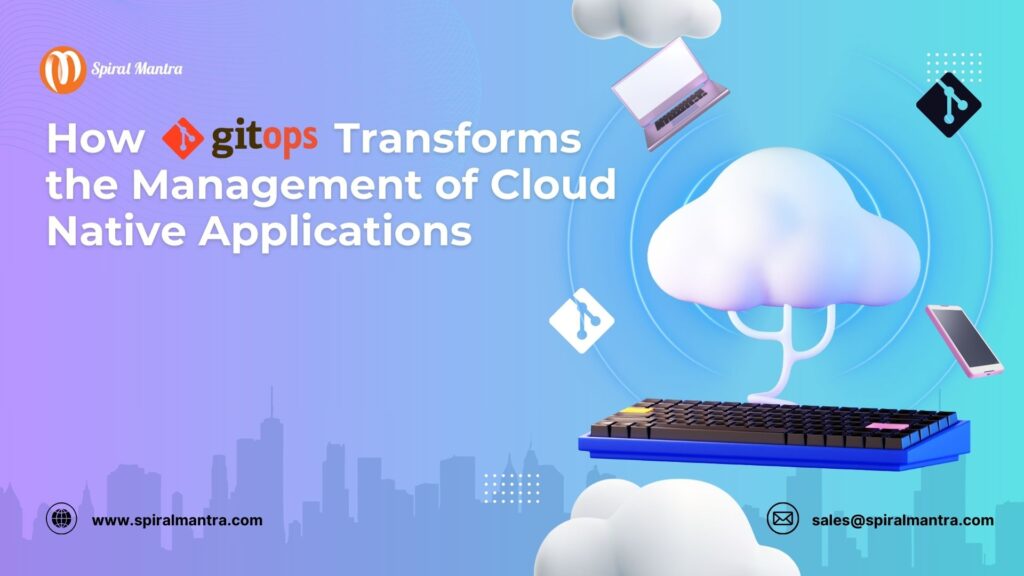 Businesses are embracing cloud-native applications to meet unprecedented challenges while gaining opportunities to maintain a competitive advantage. As apps become increasingly adapted and composite, the need for a robust and effective deployment strategy becomes a mandate to scale intricate systems. GitOps emerged as a modern methodology poised to recast the CI-CD process of cloud-native applications.
Businesses are embracing cloud-native applications to meet unprecedented challenges while gaining opportunities to maintain a competitive advantage. As apps become increasingly adapted and composite, the need for a robust and effective deployment strategy becomes a mandate to scale intricate systems. GitOps emerged as a modern methodology poised to recast the CI-CD process of cloud-native applications.
Kubernetes has already solidified its spot as an orchestration tool utilized for containerized applications. In contrast, GitOps for cloud-native applications arose as a revolutionary paradigm that aids DevOps Consulting teams in deploying and monitoring infrastructure at a scale. Having stated a fact then,

GitOps eventually appeared as a game-changer, leading businesses to scale and manage their intricate systems.
What GitOps Eventually Stands For?
GitOps is a process to manage Kubernetes clusters by utilizing Git repositories to implement CI CD pipelines for application delivery. Before the rise of this technology, deployments over the cloud were built on local CI/CD pipelines that required manually written deployment scripts. However, the situation was eradicated by time, as Git developers use delivery pipelines and familiar tools to fast-track both operations and deployments.

Spiral Mantra DevOps consulting services focus on strategizing and implementing customized Git-centric DevOps solutions that align with your business’s unique needs.
Let’s have a look at the fundamentals.
Of course, in the technical domain, simpler concepts look more complex in reality.Everything needs to be stored in Git repositories to observe your clusters while describing code and policies with version control management. Further, the descriptions were added in YAML, allowing configuration files to transfer accordingly.
There is always a sync between your clusters and the Git repository; thus, making use of the Kubernetes controller (Flux) accelerates the cycle of maximum output. Besides this, it is also helpful to execute and follow the operator pattern. Since Kubernetes clusters will be stored in Git YAML, it is effective for the DevOps team to spot changes between your running cluster and the available Git file.After making the required Git file changes, Jenkins (which is eventually an automated server) pushes these variations that can be shown in the Quay container. Later, Jenkins runs a new configuration command for the package manager, charting to the master storage bucket.

GitOps for Cloud-Native Applications: The Working Mechanism
Environment/Application Configurations
There are two major repositories available, i.e., application (which contains application source code) and environment (which contains deployment files of the current infrastructure). It describes the details of the app's infrastructural services, which include the monitoring tool, major service mesh, and the message broker that can be run in a specified version amongst environment configurations.
Differentiate Between Push and Pull-based Deployments
Push vs. pull-based deployment is two major GitOps deployment strategies, ensuring the disposition environment bears a resemblance to the desired infrastructure. Both of them are vastly used by DevOps developers; however, the pull-based approach is measured to be more secure in implementing the technology. A push-based deployment strategy can be implemented with popular CI/CD tools like CircleCI and Jenkins. Here’s the detailed diagram for better understanding.

The pull-based deployment strategy also sticks to the same concepts; however, it differs in terms of how the pipeline works. Traditional CI CD pipelines are pushed to an application repository where the operator is introduced.For better understanding, navigate to the following diagram.

The GitOps workflow stereotypically integrates with major critical technologies - Argo CD, Jenkins, and Flux—resulting in reconciling the actual state of the cloud-native applications' infrastructure.
Build a Strong GitOps Foundation With Spiral Mantra
By adopting GitOps, enterprises can effectively navigate the complexity of modern cloud ecosystems while delivering value to customers with unprecedented speed and confidence. Declarative infrastructure management for cloud-native applications stands out as the cornerstone practice for businesses looking to adopt indisputable infrastructure principles while adhering to maintaining compliance for multi-cloud environments. Thus, by adopting Git-based operations, enterprises can explore and navigate further to resolve the complexity of modern cloud ecosystems.
Spiral Mantra, the prominent DevOps consulting company, excels in Git-centric operations and workflows that align with our clients’ objectives. Our expert Azure DevOps consultants leverage best-in-class tools like Azure Kubernetes Service, Terraform, and Prometheus to establish automation frameworks and robust security for modern cloud-native application management